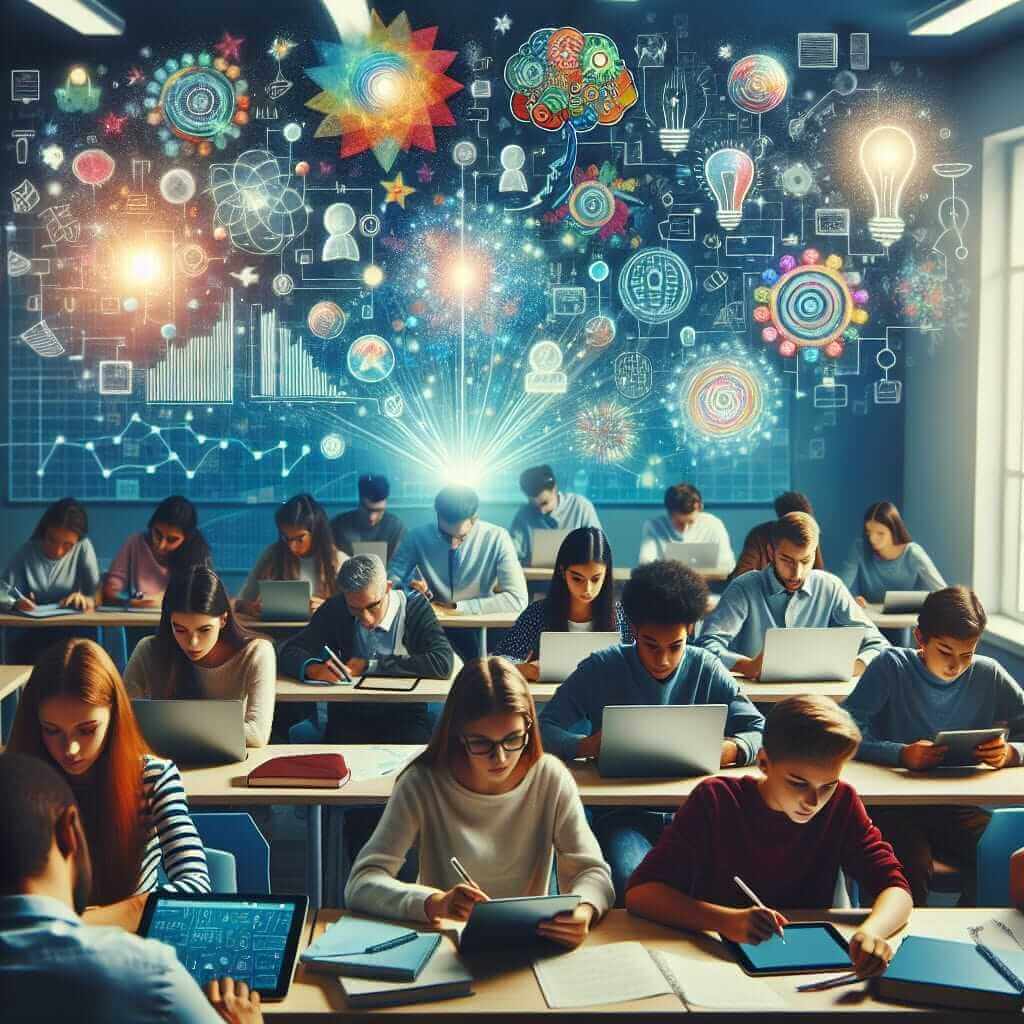The integration of technology in education has been a frequent discussion topic in IELTS Writing Task 2 exams. Historically, prompts related to technology in education have appeared consistently due to the growing importance of digital literacy and advanced learning tools in modern academic environments. Given the rapid advancements in this field, it is anticipated that this topic will maintain its prominence in future exams.
From evaluating past IELTS papers, the following are some notable writing prompts:
- “Some people believe that modern technology is raising educational standards. Do you agree or disagree?”
- “Technology in the classroom: does it enhance learning, or is it merely a distraction?”
- “How has technology transformed traditional education methods?”
For this essay, I will elaborate on the second prompt as it closely mirrors real exam questions, offering comprehensive insights on the intersection of technology and education.
Selected Prompt for Sample Essay
Technology in the classroom: does it enhance learning, or is it merely a distraction?
Analysis of the Prompt
This prompt requires the test taker to discuss the impact of technology in educational environments. The response must evaluate both viewpoints: one that supports the notion that technology enhances learning, and the other that suggests it serves as a distraction. The structure should include an introduction, body paragraphs that present and expand on each perspective, and a conclusion that provides a balanced viewpoint.
Sample Essay
In contemporary education, the incorporation of technology, such as interactive whiteboards, tablets, and online resources, has become increasingly prevalent. While some argue that this digital shift enhances educational experiences, others believe it distracts students from core learning objectives. This essay will discuss both viewpoints before arriving at a reasoned conclusion.
On the one hand, technology undeniably enhances the learning experience in various meaningful ways. For instance, digital tools provide students with interactive and engaging methods to grasp complex subjects. Interactive educational software can simplify difficult topics, making them more accessible. Furthermore, technology allows for personalized learning. Programs can adapt to individual student needs, offering exercises and feedback tailored to their specific strengths and weaknesses, thereby fostering an environment of inclusive education.
Moreover, the internet serves as a vast repository of knowledge, granting students access to a wealth of information far beyond the confines of traditional textbooks. This ease of access to diverse learning materials aids in broadening students’ horizons and promotes a culture of self-directed learning. Educational platforms like Khan Academy and Coursera allow students to supplement their studies, providing additional resources to clarify and reinforce classroom teachings.
 Interactive Classroom
Interactive Classroom
On the other hand, there are valid concerns that technology can be a source of distraction. The presence of smartphones and other gadgets in the classroom may divert students’ attention from the lesson. For example, social media, games, and other non-educational applications can easily tempt students, leading to a loss of focus. This distraction potential is compounded by the lack of adequate supervision or digital literacy among some teachers, who may struggle to integrate technology effectively into their teaching methods.
Furthermore, the reliance on technology can occasionally lead to a superficial understanding of content. Students might skip foundational knowledge in favor of quick answers found online, which can be detrimental to their overall educational development. The overuse of technology in classrooms may also reduce face-to-face interactions, which are crucial for developing essential social skills and collaborative learning experiences.
In conclusion, while technology in education has significant advantages that can enhance learning by providing interactive, personalized, and accessible educational resources, it also has the potential to distract students and undermine foundational learning if not appropriately managed. Therefore, a balanced approach is necessary, striving to integrate technology in ways that maximize its educational benefits while minimizing its distractive potential. This balance can be achieved through strategic planning, effective teacher training, and consistent monitoring.
Word count: 387
Important Considerations When Writing About This Topic
Vocabulary and Grammar Tips
- Syncopated Learning: Use this term to describe the interrupted learning process due to distractions.
- Inclusive Education: A term referring to education that accommodates all students, including those with diverse needs.
- Digital Literacy: Refers to the ability to effectively use digital tools and resources.
- Superficial Understanding: Denotes a shallow comprehension of topics without depth.
- Interactive Learning: A method that involves students actively participating through technology.
Grammar Structures
- Cause and Effect: Using phrases like “as a result,” “therefore,” and “consequently” can effectively show the relationship between technology use and its impacts.
- Comparison and Contrast: Phrases like “on the one hand,” “on the other hand,” and “by contrast” are useful for comparing the pros and cons of technology in education.
- Concessive Clauses: Implementing structures like “although,” “even though,” and “while” to present balanced arguments is crucial.
Difficult Vocabulary with Meaning
- Repository (noun): /rɪˈpɒzɪtəri/ – a place where large amounts of information are stored.
- Tempt (verb): /tɛmpt/ – to entice or allure to something considered wrong or unwise.
- Supervision (noun): /ˌsuːpərˈvɪʒən/ – the act of managing or overseeing.
- Foundational (adj.): /faʊnˈdeɪʃənl/ – fundamental, essential for the basics.
- Strategic (adj.): /strəˈtiːdʒɪk/ – carefully designed or planned to serve a particular purpose or advantage.
Conclusion
Technology in education continues to be a pivotal topic in IELTS Writing Task 2. By understanding the potential benefits and drawbacks, students can prepare more effective and balanced essays. Future prompts may continue to explore this theme, so practicing with real and probable scenarios will be beneficial. Example prompts might include evaluating the cost-effectiveness of technology in education or discussing how technology can bridge educational inequalities.
Effective preparation involves not just understanding various viewpoints but also enhancing vocabulary and grammar to articulate these perspectives convincingly.


